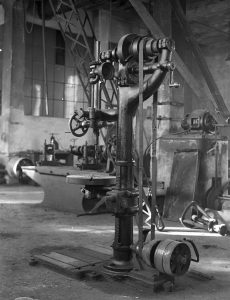
While the word “boring” is most commonly used to describe a dull, monotonous or otherwise uninteresting task, it also refers to a machining process in which an existing hole in a workpiece is expanded using a boring machine. Machine boring has been around since the mid- to late 1700s, during which American entrepreneur John Wilkinson invented the world’s first boring machine. Since then, it’s become a process used by manufacturing companies. So, how does machine boring work exactly?
Machine Boring Explained
Some people assume that machine boring is the same as drilling, but this isn’t necessarily true. The purpose of boring is to expand or enlarge a hole in a workpiece. Machine boring doesn’t create the initial pilot hole. Rather, it expands the pilot hole, making it wider with extreme precision.
If a manufacturing company needs to create a hole of a specific diameter size in a workpiece, it may use machine boring. First, the manufacturing company must create the initial pilot hole, which is typically done by drilling. After the pilot hole has been created, a boring machine can be used on the workpiece. The machine’s tool bit digs into the pilot hole, forcing it to expand to the manufacturing company’s desired size.
Line-Boring vs Back-Boring: What’s the Difference?
There are two types of machine boring processes: line-boring and back-boring. With line-boring, a boring bar is fully supported on both ends of the workpiece. With back-boring, it’s only supported on one end of the workpiece.
Boring Machines
Boring machines, of course, are the heavy-duty machines used to bore holes into a workpiece. They typically contain a sharp tool bit that’s forced into the workpiece’s hole.
Like boring machine boring processes, there are two types of boring machines: general purpose and boring specific. General purpose boring machines consist of lathes and milling machines. While they can perform boring processes, they are also capable of performing other machining processes, hence why they are called “general purpose.” Boring specific machines, on the other hand, are designed specifically for boring processes. Common examples of boring specific machines include horizontal boring machines and vertical boring machines.
Whether it’s general purpose of boring specific, most boring machines are affixed with a diamond-, steel- or carbide-tipped tool bit. After positioning and securing the workpiece in place, the boring machine is turned on. To expand the workpiece’s hole, the boring machine presses the rotating tool bit into the hole.
